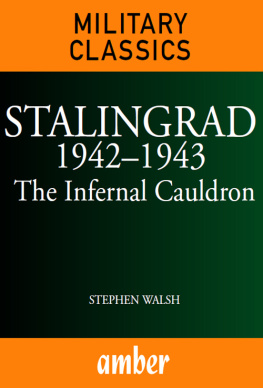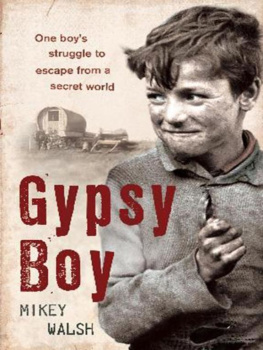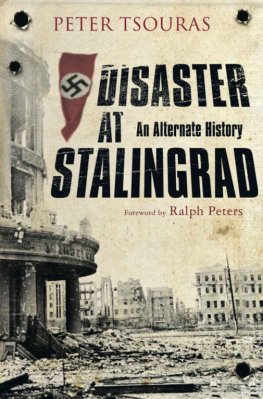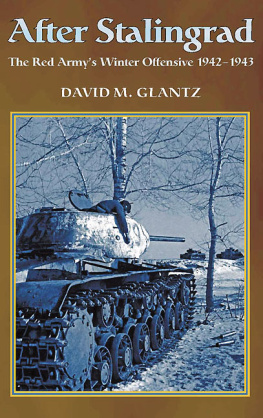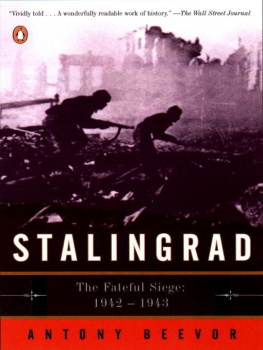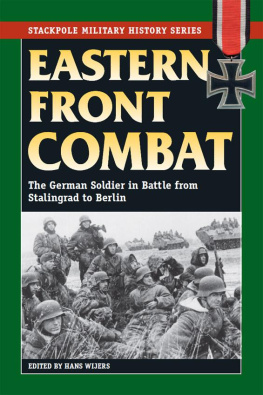STALINGRAD
19421943
The Infernal Cauldron
STEPHEN WALSH
This digital edition first published in 2012
Published by
Amber Books Ltd
Bradleys Close
7477 White Lion Street
London N1 9PF
United Kingdom
Website: www.amberbooks.co.uk
Appstore: itunes.com/apps/amberbooksltd
Facebook: www.facebook.com/amberbooks
Twitter: @amberbooks
Copyright 2012 Amber Books Ltd
ISBN: 978 190 827398 7
All rights reserved. With the exception of quoting brief passages for the purpose of review no part of this publication may be reproduced without prior written permission from the publisher. The information in this book is true and complete to the best of our knowledge. All recommendations are made without any guarantee on the part of the author or publisher, who also disclaim any liability incurred in connection with the use of this data or specific details.
www.amberbooks.co.uk
Contents
Other titles in this series:
The Battle of Britain
The Battle of the Bulge
Bodies of Evidence
Churchill: A History
The Gestapo
The History of Torture
The Marine Corps
The Sniper At War
SS: Hitlers Foreign Divisions
The Survival Handbook
The Vietnam War
The Worlds Great Tanks

Website: www.amberbooks.co.uk
Appstore: itunes.com/apps/amberbooksltd
Facebook: www.facebook.com/amberbooks/
Twitter: @amberbooks
CHAPTER ONE
Operation Barbarossa:
The Invasion of the Soviet Union
When Hitler launched the invasion of the Soviet Union in June 1941, he anticipated a repeat of the Wehrmachts earlier successes in defeating both Poland, Norway and France in a single swift campaign. Instead, Germany found herself committed to a struggle that would lead to her utter defeat.
The battle of Stalingrad represents one of the most significant turning points of the twentieth century: the German Wehrmacht was defeated in a titanic struggle on the shores of the River Volga by a Red Army that, only a few months earlier, had appeared to be on the verge of complete defeat.
At the battle of Stalingrad, which lasted from 13 September 1942 until the final German surrender on 2 February 1943, the Russians unlike at Berlin in April 1945 were not fighting understrength formations full of old men and fanatically committed young boys. On the contrary, they engaged Germanys elite 300,000 strong 6th Army, commanded by Colonel-General Friedrich Paulus, one of Hitlers favourite generals. Stalingrad came to represent the resurrection of the Red Army and the spiritual tomb of the German Army. It may have taken another three years to come to fruition, but it was here that the fortunes of war began to turn against Germany on the Eastern Front.
The catastrophe at Stalingrad did not, of course, bring about the immediate defeat of Germany, but after February 1943, few German officers genuinely believed in victory. Hitler, on the other hand, if secretly worried that victory in the east was slipping from his grasp, remained faithful to his belief in the idea of will and National Socialist ardour as the decisive factors in war. The defeat at Stalingrad finally completed the rupture of trust between Hitler and the army high command which began at the battle of Moscow in December 1941. To the Germans, Stalingrad was the single most catastrophic defeat of German arms since Napoleons annihilation of the Prussian Army at Jena-Auerstadt in 1806 and Germany was now engaged in a desperate war for survival against a resurgent and vengeful enemy upon whom she had inflicted the most savage and cruel war. To the Soviets, victory represented triumphant survival over the nightmare of adversity faced since the German invasion in June 1941.
At 0315 hours on 22 June 1941, the German army launched Operation Barbarossa, the largest single military operation of all time. The number of troops involved, the size of the operations, as well as the cruelty of the war, both staggers and appalls the imagination. This was a racial war of annihilation launched by Hitler in pursuit of Lebensraum (living space) in the east. Success would acquire for Germany the agricultural and economic resources needed to secure immunity from Allied blockade and lay the foundations of the Thousand Year Reich. Simultaneously, it would destroy Hitlers ideological foe, the Communist Soviet Union, a state he believed to have been infiltrated by, and under the control of, the Jews. Furthermore, the destruction of the Soviet Union would, in Hitlers eyes, induce the unreasonably belligerent Churchill to make peace by acknowledging German control of Europe.
In Operation Barbarossa, the German army would fight with remarkable skill but nevertheless they would fail to defeat the Soviet Union in one campaign as Hitler had intended. Why did what succeeded so dramatically between September 1939 and November 1941 fail to secure complete victory by the end of 1941 and promise so much but deliver so little in 1942? Ironically, many of the reasons for the German failure on the Eastern Front, so emphatically confirmed at Stalingrad, lay in the nature of the German armys approach to warfare and their fighting methods, commonly known as Blitzkrieg. The German Armys understanding of strategy was rooted in the nineteenth-century concept of the Vernichtungschlacht (strategic military victory in one single campaign). In accordance with this idea, it believed that destruction of the enemy army through tactical excellence in fighting would bring about such strategic military victory in one single campaign, and thus automatically achieve the political objectives of the war. The German Army of the 1920s and 1930s drew many lessons from World War I but refused to believe that the famous Schlieffen Plan of 1914 perhaps the ultimate expression of the Vernichtungschlacht failed not because of tactical flaws in its execution by field commanders, but because it was unworkable unless the French and British adopted a suicidal strategic and tactical approach.
At first sight, Germanys remarkable victory in France between 10 May and 22 June 1940 would appear to justify the idea of the Vernichtungschlacht . In terms of manpower, armour, and airpower, the two sides were approximately equal, yet in those six weeks, Germany achieved what she had failed to do in four years between 1914 and 1918. Naturally, after June 1940, senior German officers concluded that Vernichtungschlacht during the modern industrialised era could be achieved through tactical excellence. However, the Wehrmachts victory in France came about because the inferior French and British forces were unable to fight Germanys war of manoeuvre, and it did not really provide a sufficiently stern test of German fighting prowess to validate the Vernichtungschlacht concept. The German belief consciously or unconsciously that it did helps to explain the failure of Barbarossa in 1941 and Operation Blau in 1942.
German fighting methods in World War II have become known as Blitzkrieg and are widely regarded as having constituted a revolutionary advance in the art of war. Yet, in November 1941 as the Germans approached Moscow, no less an individual than Hitler declared I have never used the word Blitzkrieg, because it is a very silly word. To German officers, the new word simply described old fighting methods. Since the nineteenth century, German commanders had sought to destroy the enemy through the tactical encirclement and physical destruction of the enemy in a Kesselschlacht (cauldron battle of annihilation). This was the practical expression in the field of the strategic idea of Vernichtungschlacht . The means that is, armour, airpower and motorisation of carrying out the Kesselschlacht were new, but they were to serve traditional aims. In effect they were new wine in old bottles. Of course, the number of encirclement and annihilation victories required to win the war in one campaign depended upon the size and skill of the opponent.

